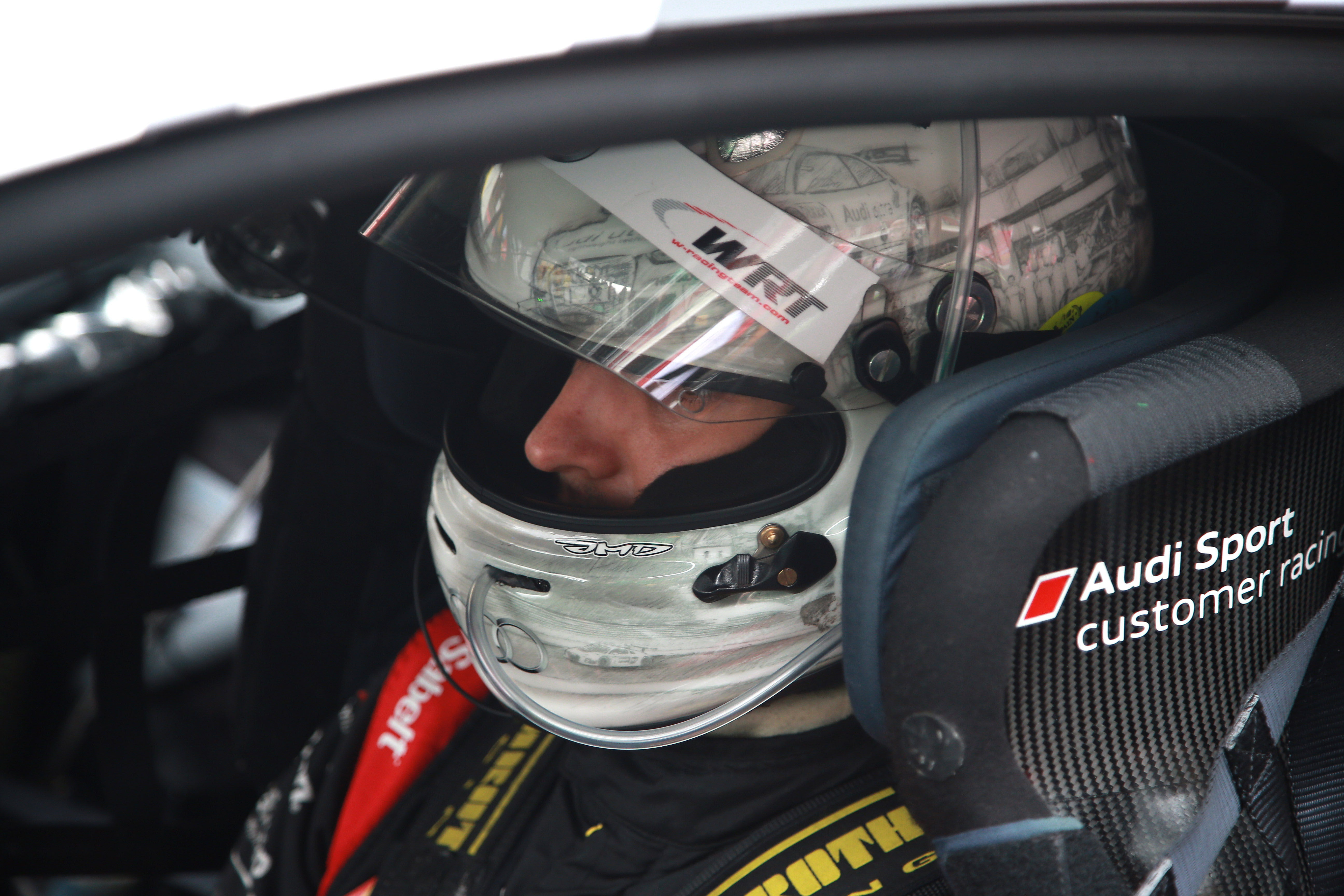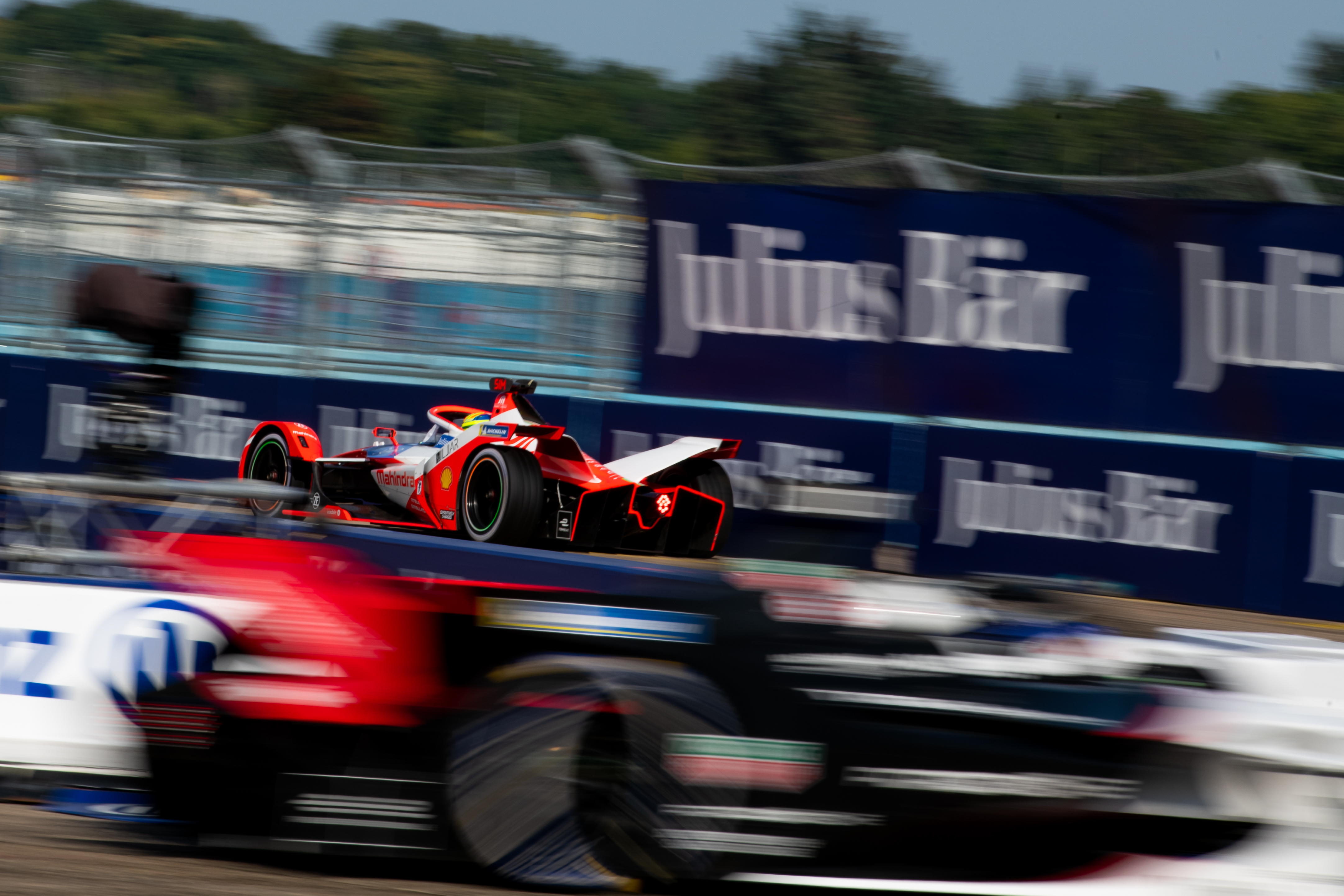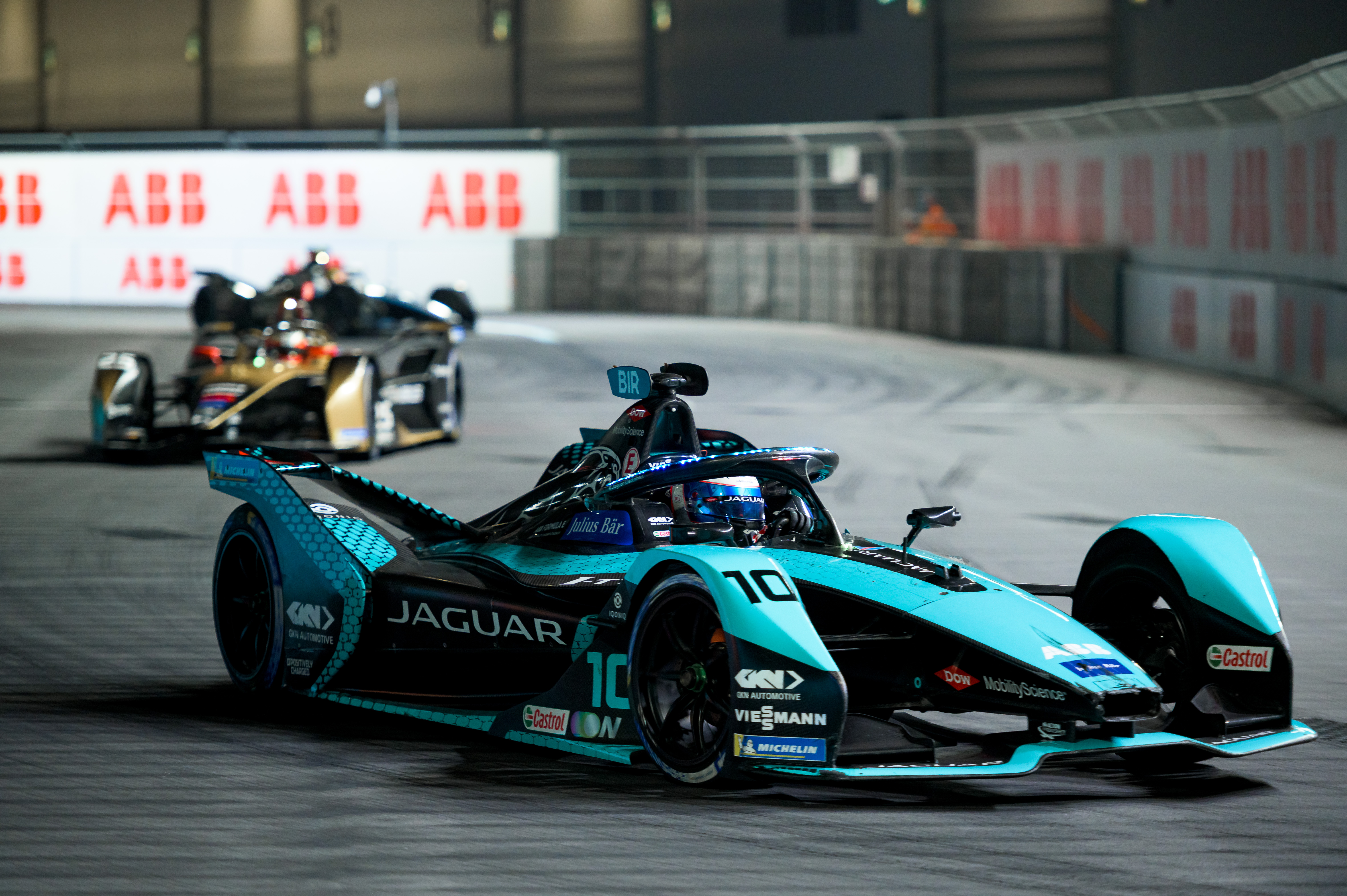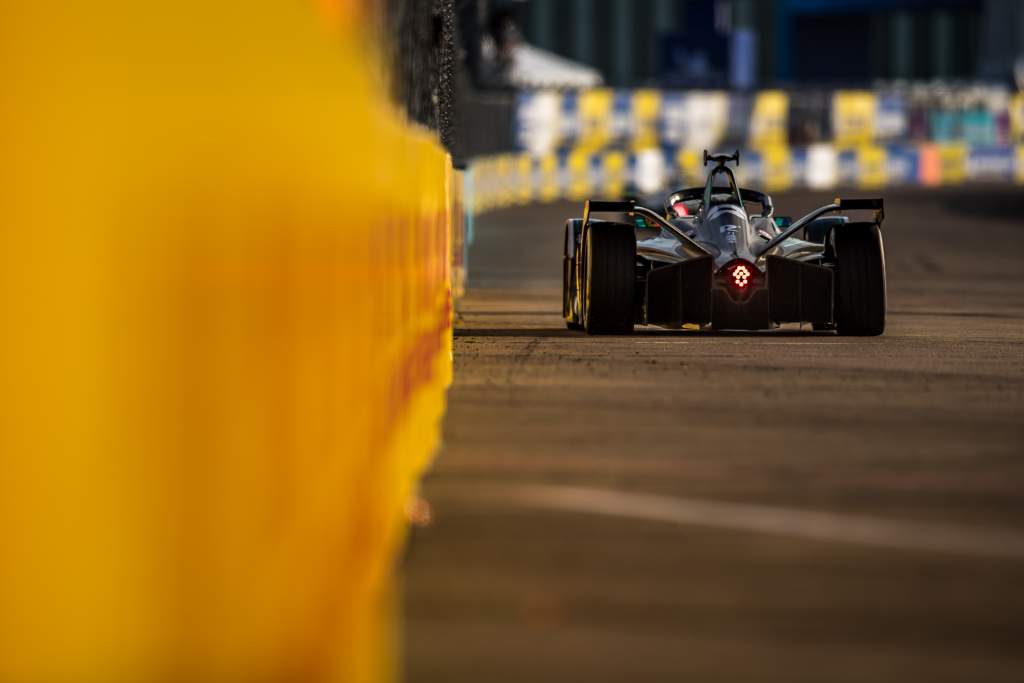The new Gen3 car, which will see Formula E cars become more powerful than current Formula 3 cars, has run for the first time in a secret shakedown test in Northern France recently.
Tight security around the test was implemented by both the FIA and technical project suppliers, Spark Racing Technology, but The Race has uncovered some details about the car and the initial testing phase.
Prior to this month’s first shakedowns, an old GP2 chassis had been converted and modified to use in the first testing of prototype Hankook-supplied tyres.
These tests took place earlier this year before the prototype Gen3 car was ready for initial testing, which is understood to have taken place initially without bodywork on the car.
The Gen3 car will have a maximum power of 350kW for qualifying, include a battery supplied by Williams Advanced Engineering that aims to be 180kg lighter than the existing Gen2 unit, and should see an element of fast charging in its sporting format structure.
The Race understands that the car could run with all its bodywork in place for an upcoming test next month, which is likely to be carried out by three-time Le Mans winner Benoit Treluyer (pictured below).

The former Audi LMP1 driver was part of the Gen2 development team with Spark Racing Technologies (SRT) and may be tasked with the initial testing programme that will take place throughout October and November.
Some issues at the test, described by a source close to the project as “pretty much the usual new car challenges”, caused small delays in the shakedown of the all-new car.
The same source suggested to The Race that the car ran in France at either the Clastre or La Gauche Ferte airfield facilities which are relatively close to SRT’s base at Tigery on the southern tip of Paris.
The Race’s source also indicated that the powertrain used in the test mule was not from an existing Formula E manufacturer, saying that “it’s independent with some suppliers familiar to Formula E but not partnered with manufacturers in the championship right now”.
SRT used a Mahindra powertrain with inverters sourced from Andretti for initial testing of the current Gen2 in 2017/18.
Specialist EV tech companies such as Integral Powertrain and Compact Dynamics have worked with teams including Nissan e.dams, Dragon Penske, Audi Sport Team ABT and Jaguar Racing in recent years in relation to powertrain design.

Additionally, YASA, which recently became a wholly-owned subsidiary of Mercedes-Benz, has been rumoured to be involved in the project.
Describing the current status of the project, the director of the FIA’s Formula E & innovative sport activities department Frederic Bertrand told The Race recently that “it’s something I would not say ‘smooth’, because it’s not exactly the right term, but it’s clearly something well on the way”.
Although Bertrand would not give any details on the current testing, he added that “the planning is as scheduled; we had a few discussions on COVID difficulties sometimes or some supply [issues]”.
“We have two working groups happening regularly with the manufacturers so that they understand where we are going and they get all the information to secure on their side that we can also develop the powertrains, within the same or parallel timing with the rest of the car.”
One of those groups is the Technical Working Group for the Gen3 project which is chaired by FIA project leader Alessandra Ciliberti and overseen by several FIA technical managers including Xavier Mestelen-Pinon, Laurent Arnaud and Pascal Girard.
In addition, representatives from DS, Jaguar, Mahindra, Nissan, NIO 333, Penske, and Porsche are in attendance as the current seven registered manufacturers.

Mercedes was not represented at the last meeting held earlier this month after it gave notice of its intention to withdraw as a manufacturer next August. Williams Advanced Engineering and Hankook also have delegates at the meetings.
One of the critical aspects of the testing will be the Hankook all-weather tyres after the Korean manufacturer won the tender last year to supersede Michelin, which had been the founding technical partner of Formula E after signing an initial deal back in 2013.
“It’s never easy to comprehend and understand the fact that we want a tyre where performance is needed, but we need also a tyre everyone can exploit and work with any type of track and [a tyre that] is able to be managed [in] any type of weather conditions,” commented Bertrand.
“The development again is very linked to the development of the car itself. So that we need to understand the type of constraints that we create and how this will be transferred to the tyres.”
Some teams have told The Race recently that they were disappointed in the amount of tyre data so far received for Gen3, with some indicating that they were considering their own tyre modelling data to supplement preparations.







